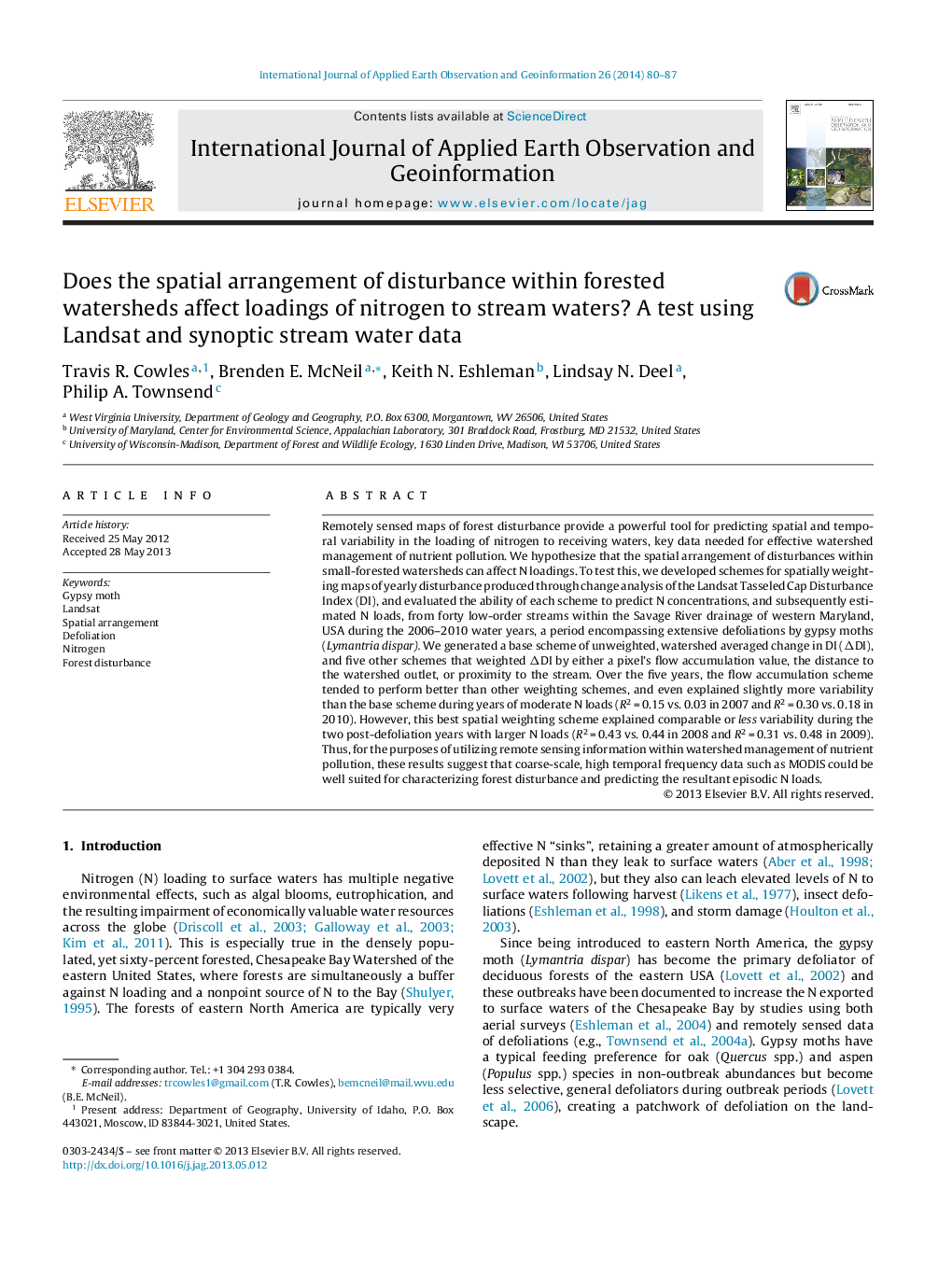| کد مقاله | کد نشریه | سال انتشار | مقاله انگلیسی | نسخه تمام متن |
|---|---|---|---|---|
| 6349101 | 1621834 | 2014 | 8 صفحه PDF | دانلود رایگان |
عنوان انگلیسی مقاله ISI
Does the spatial arrangement of disturbance within forested watersheds affect loadings of nitrogen to stream waters? A test using Landsat and synoptic stream water data
ترجمه فارسی عنوان
آیا آرایش فضایی اختلال در حوضه های جنگلی بر بارهای نیتروژن تا جریان آب تاثیر می گذارد؟ آزمایش با استفاده از اطلاعات لندست و جریان آب سینوپتیک
دانلود مقاله + سفارش ترجمه
دانلود مقاله ISI انگلیسی
رایگان برای ایرانیان
کلمات کلیدی
گلدان کولی، لندست، آرایش فضایی، تقلید کردن، نیتروژن، اختلال جنگل،
موضوعات مرتبط
مهندسی و علوم پایه
علوم زمین و سیارات
کامپیوتر در علوم زمین
چکیده انگلیسی
Remotely sensed maps of forest disturbance provide a powerful tool for predicting spatial and temporal variability in the loading of nitrogen to receiving waters, key data needed for effective watershed management of nutrient pollution. We hypothesize that the spatial arrangement of disturbances within small-forested watersheds can affect N loadings. To test this, we developed schemes for spatially weighting maps of yearly disturbance produced through change analysis of the Landsat Tasseled Cap Disturbance Index (DI), and evaluated the ability of each scheme to predict N concentrations, and subsequently estimated N loads, from forty low-order streams within the Savage River drainage of western Maryland, USA during the 2006-2010 water years, a period encompassing extensive defoliations by gypsy moths (Lymantria dispar). We generated a base scheme of unweighted, watershed averaged change in DI (ÎDI), and five other schemes that weighted ÎDI by either a pixel's flow accumulation value, the distance to the watershed outlet, or proximity to the stream. Over the five years, the flow accumulation scheme tended to perform better than other weighting schemes, and even explained slightly more variability than the base scheme during years of moderate N loads (R2Â =Â 0.15 vs. 0.03 in 2007 and R2Â =Â 0.30 vs. 0.18 in 2010). However, this best spatial weighting scheme explained comparable or less variability during the two post-defoliation years with larger N loads (R2Â =Â 0.43 vs. 0.44 in 2008 and R2Â =Â 0.31 vs. 0.48 in 2009). Thus, for the purposes of utilizing remote sensing information within watershed management of nutrient pollution, these results suggest that coarse-scale, high temporal frequency data such as MODIS could be well suited for characterizing forest disturbance and predicting the resultant episodic N loads.
ناشر
Database: Elsevier - ScienceDirect (ساینس دایرکت)
Journal: International Journal of Applied Earth Observation and Geoinformation - Volume 26, February 2014, Pages 80-87
Journal: International Journal of Applied Earth Observation and Geoinformation - Volume 26, February 2014, Pages 80-87
نویسندگان
Travis R. Cowles, Brenden E. McNeil, Keith N. Eshleman, Lindsay N. Deel, Philip A. Townsend,
